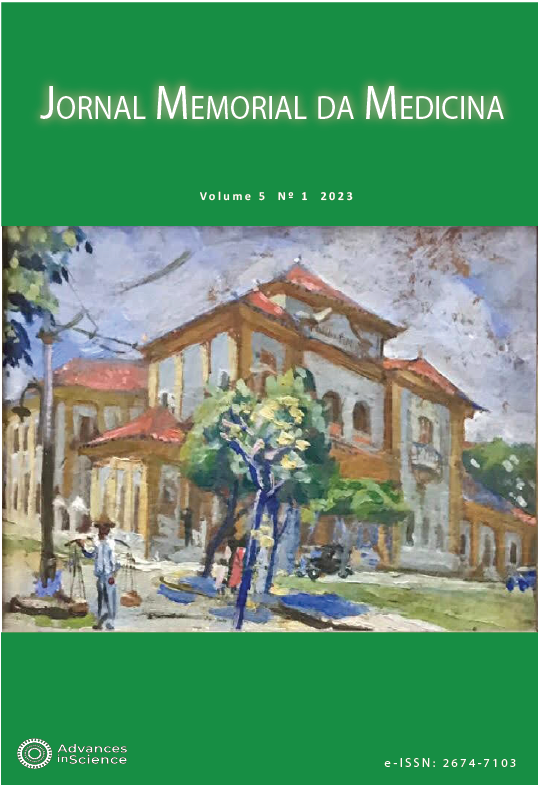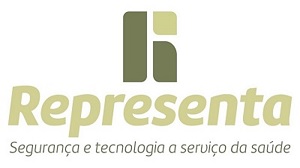Digital media as tools to combat neurophobia in medical education: Experience report in an Extension Project
DOI:
https://doi.org/10.37085/jmmv5.n1.2023.pp.9-13Keywords:
Neurophobia, Social network, medical educationAbstract
Neurophobia, defined as receiving and rejecting neuroscience, is a problem that is evident in several medical schools around the world, in different countries, where many students experience it, in different stages of training. The exact motivations that justify neurophobia are still the subject of studies, analyzes and debates between academics and educators, however, the complexity of the subjects and the need to reformulate the didactics used in teaching such content can compose, at least in part, the origin of such a pedagogical failure. By identifying such a gap, the Extension Project to combat Neurophobia was based on using a more striking and accessible didactics, using social networks, given its easy access and wide use by the academic public. During the period of one year, various contents of neurosciences were posted digitally for students, with an open space for questions and suggestions. Throughout this process, indicators made available by the social network platform were used, controlling the wide reach and visibility that this method of disseminating science has, as well as the ease of saving the content and disseminating it. That is why it is essential that new projects are monitored in the digital university environment, so that the best paths and formats can be discussed, so that contact with this learning model is encouraged and platforms are improved.
Downloads
References
Sterling M, Leung P, Wright D and Bishop TF. The Use of Social Media in Graduate Medical Education. Academic Medicine 2017; 92(7): 1043-1056 Doi:10.1097/acm.0000000000001617
Wilkinson A and Ashcroft J. Opportunities and Obstacles for Providing Medical Education Through Social Media. JMIR Medical Education 2019; 5(2): Doi:10.2196/15297
Abushouk AI and Duc NM. Curing neurophobia in medical schools: evidence-based strategies. Medical Education Online 2016; 21(1): Doi:10.3402/meo.v21.32476
Chhetri SK. E-learning in neurology education: Principles, opportunities and challenges in combating neurophobia. Journal of Clinical Neuroscience 2017; 44(80-83 Doi:10.1016/j.jocn.2017.06.049
Sandrone S, Berthaud JV, Chuquilin M, Cios J, Ghosh P, Gottlieb-Smith RJ, . . . Schneider LD. Neurologic and neuroscience education. Neurology 2019; 92(4): 174-179 Doi:10.1212/wnl.0000000000006716
Shelley BP, Chacko TV and Nair BR. Preventing "Neurophobia": Remodeling Neurology Education for 21(st)-Century Medical Students through Effective Pedagogical Strategies for "Neurophilia". Ann Indian Acad Neurol 2018; 21(1): 9-18 Doi:10.4103/aian.AIAN_371_17
Shiels L, Majmundar P, Zywot A, Sobotka J, Lau CSM and Jalonen TO. Medical student attitudes and educational interventions to prevent neurophobia: a longitudinal study. BMC Medical Education 2017; 17(1): Doi:10.1186/s12909-017-1055-4
McCarron MO, Stevenson M, Loftus AM and McKeown P. Neurophobia among general practice trainees: The evidence, perceived causes and solutions. Clinical Neurology and Neurosurgery 2014; 122(124-128 Doi:10.1016/j.clineuro.2014.03.021
Moore FGA. A Diverse Specialty: What Students Teach Us About Neurology and “Neurophobia”. Canadian Journal of Neurological Sciences / Journal Canadien des Sciences Neurologiques 2020; 47(5): 675-680 Doi:10.1017/cjn.2020.102
Youssef FF. Neurophobia and its implications: evidence from a Caribbean medical school. BMC Medical Education 2009; 9(1): Doi:10.1186/1472-6920-9-39
Javaid MA, Chakraborty S, Cryan JF, Schellekens H and Toulouse A. Understanding neurophobia: Reasons behind impaired understanding and learning of neuroanatomy in cross-disciplinary healthcare students. Anatomical Sciences Education 2018; 11(1): 81-93 Doi:10.1002/ase.1711
Flanagan E, Walsh C and Tubridy N. ?Neurophobia?? attitudes of medical students and doctors in Ireland to neurological teaching. European Journal of Neurology 2007; 14(10): 1109-1112 Doi:10.1111/j.1468-1331.2007.01911.x
Matthias AT, Nagasingha P, Ranasinghe P and Gunatilake SB. Neurophobia among medical students and non-specialist doctors in Sri Lanka. BMC Medical Education 2013; 13(1): Doi:10.1186/1472-6920-13-164
Kam KQ, Tan GS, Tan K, Lim EC, Koh NY and Tan NC. Neurophobia in medical students and junior doctors--blame the GIK. Ann Acad Med Singap 2013; 42(11): 559-566
Shah V and Kotsenas AL. Social Media Tips to Enhance Medical Education. Acad Radiol 2017; 24(6): 747-752 Doi:10.1016/j.acra.2016.12.023
Katz M and Nandi N. Social Media and Medical Education in the Context of the COVID-19 Pandemic: Scoping Review. JMIR Med Educ 2021; 7(2): e25892 Doi:10.2196/25892
Downloads
Published
How to Cite
License
Os direitos autorais para artigos publicados no Jornal Memorial da Medicina são do autor, com direitos de primeira publicação para a revista. Em virtude de aparecerem nesta revista de acesso público, os artigos são de uso gratuito, com atribuições próprias, em aplicações educacionais e não comerciais. O Jornal Memorial da Medcina permitirá o uso dos trabalhos publicados para fins não comerciais, incluindo direito de enviar o trabalho para bases de dados de acesso público. Os artigos publicados são de total e exclusiva responsabilidade dos autores. Há encargos para submissão no processamento de artigos (Articles Processing Charge - APC).








